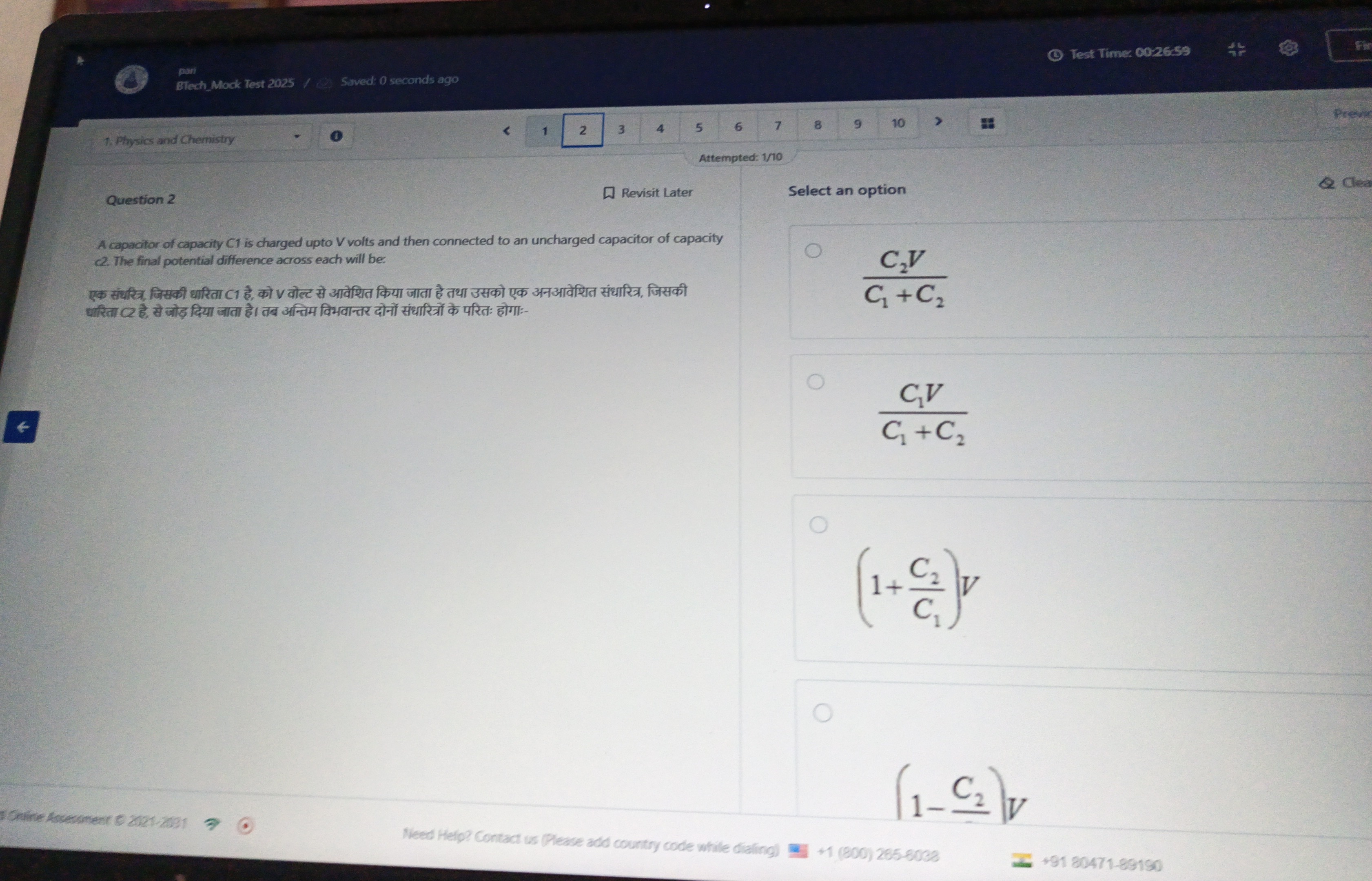Question
Question: A capacitor of capacity C1 is charged upto V volts and then connected to an uncharged capacitor of c...
A capacitor of capacity C1 is charged upto V volts and then connected to an uncharged capacitor of capacity C2. The final potential difference across each will be: एक संधरित्र, जिसकी धारिता C1 है, को V वोल्ट से आवेशित किया जाता है तथा उसको एक अनआवेशित संधारित्र, जिसकी धारिता C2 है, से जोड़ दिया जाता है। तब अन्तिम विभवान्तर दोनों संधारित्रों के परितः होगाः-

A
C1+C2C2V
B
C1+C2C1V
C
(1+C1C2)V
D
(1−C1C2)V
Answer
C1+C2C1V
Explanation
Solution
Explanation of the solution:
-
Initial State:
- Capacitor C1 is charged to V volts. The initial charge on C1 is Q1=C1V.
- Capacitor C2 is uncharged, so its initial charge is Q2=0.
- The total initial charge in the system is Qinitial=Q1+Q2=C1V+0=C1V.
-
Final State (After Connection):
- When the two capacitors are connected, they form a parallel combination. Charge redistributes between them until they reach a common final potential difference, let's call it Vf.
- The final charge on C1 will be Q1′=C1Vf.
- The final charge on C2 will be Q2′=C2Vf.
- The total final charge in the system is Qfinal=Q1′+Q2′=C1Vf+C2Vf=(C1+C2)Vf.
-
Conservation of Charge:
- According to the principle of conservation of charge, the total charge in an isolated system remains constant. Therefore, the total initial charge must be equal to the total final charge.
- Qinitial=Qfinal
- C1V=(C1+C2)Vf
-
Final Potential Difference:
- Solving for Vf: Vf=C1+C2C1V
This is the final potential difference across each capacitor.
